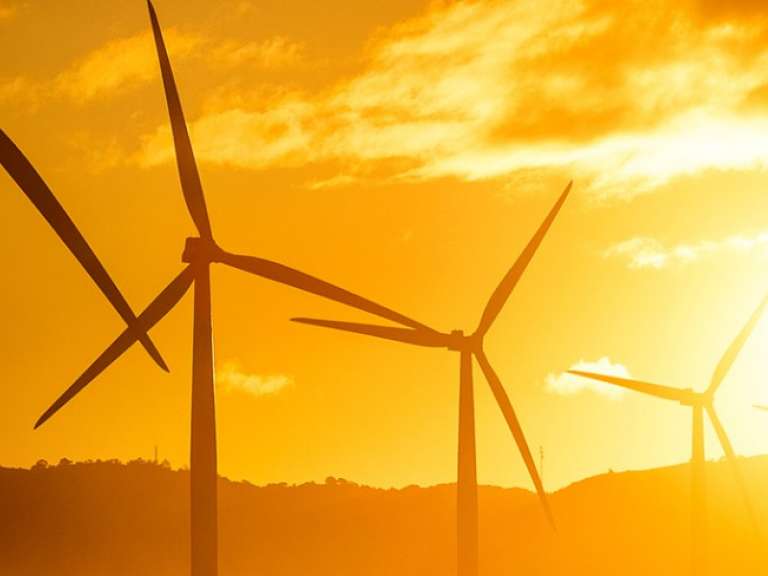The Future of Wind Machines: Taller Towers, Longer Blades, and New Opportunities
Peter Kelly-DetwilerNew technologies are establishing the future of wind machines in locations that are currently unable to harness wind power.

Wind turbines are about to get taller and stronger and deliver power at even lower prices. The future of wind machines is expansion, as technology advances are allowing new regions to harness the full potential of this resource. Wind machines are exerting growing pressure on the wholesale energy industry, while changing the role of conventional generation. Fossil plants will likely see further margin erosion, even as they are called upon more frequently to backstop wind energy.
Two key factors affect wind power economics: blade length and wind speed. A small increase in the blade length significantly increases the swept area and output. More importantly, turbine production is a function of the cube of wind speed. A doubling of speed from 10 to 20 miles per hour increases energy output eightfold. Those facts will drive the future of wind machines. Higher up, the wind becomes steadier, increasing the capacity factor and economics. Turbines will, therefore, get bigger, perched on taller towers with longer blades.
These machines have come a long way in 25 years. In 1991, a leading offshore developer installed its first 450-kilowatt (kW) machine with both a tower height and diameter of 35 meters. Now, 25 years later, the biggest of these machines are 8 megawatts (MW), 113 meters tall, and 164 meters in diameter. According to Wind Europe, the average turbine off the coast of Europe last year was 4.8 MW. By comparison, the onshore turbines installed last year in the United States typically ranged between 1.7 and 2.3 MW.
With greater power, however, comes more stress. Advanced turbine controls have been developed to cope with the challenges that accompany increased scale. Improved engineering over the last decade has increased the reliability and availability of today's modern wind turbine. Renewable Energy World indicates that the best wind turbines have availabilities in the 98 percent range—comparable to a gas-fired turbine.
Better technology and taller towers will facilitate access to previously untapped locations, such as the southeastern United States. A 2015 Department of Energy report indicates that increasing tower heights from 80 meters to 100 meters—common in Europe—increases the potential land area for wind deployment by 54 percent. Extending heights to 140 meters would boost that figure to 67 percent. This dramatically increases the wind potential in the northeastern and western United States, which could affect the economics and role of existing conventional generation fleets in these areas.
In order to accomplish this, the towers themselves are evolving. Traditional steel-tube towers may cede ground to concrete structures in an effort to access higher, more reliable winds at lower costs. The tallest concrete wind tower in the U.S. reaches 115 meters—over 30 meters higher than similar turbines constructed with steel towers.
As onshore turbines get bigger and taller, however, they face transportation constraints. For example, many trucks and railway cars cannot transport blades longer than 16 meters. Some towers cannot fit under highway overpasses. Fortunately, new technologies are emerging that will address these limitations and impact the future of wind machines.
Future blade manufacturing may also involve 3D printing, which would cut time and costs and improve quality. These 3D printing blade molds will vastly accelerate the process of creating new, efficient blade prototypes. New materials, such as hybrids of carbon and glass fibers, may also increase blade size and strength. Larger blades may be built in modular segments, allowing for easier transport and on-site assembly.
The wind turbine of the future will also be digitized. Adding a more robust IT layer to wind farms will help operators more accurately predict turbine output both on a day-ahead and real-time basis. This, in turn, will aid grid planners as they integrate wind energy into the grid. At the same time, a combined sensor and software platform will facilitate a more accurate and comprehensive view of all aspects of the wind turbine, enhancing maintenance activities, decreasing the risk of failure, and reducing costly downtime. All of these developments suggest that wind will increasingly be a key part of future generator portfolios.
James Robo, CEO of NextEra, a leading North American wind developer, recently predicted a step function change in new wind turbine technology that will cut the cost of wind by up to 50 percent, according to Seeking Alpha. This would put wind power in $20–30/MWh range without subsidies. That would put significant economic pressure on conventional generating resources but also increase their importance in integrating intermittent wind power.
Sandia National Labs is currently exploring what it would take to build a truly massive 50 MW exascale turbine someday in the future. This colossus would boast blades approximately 200 meters long. While such a thing may seem to be a stretch, today's 8 MW turbines were also the stuff of dreams not so long ago. The energy industry better be ready for the future of wind machines, as they promise to affect the energy landscape and change the role and profitability of the conventional generating fleet.
Smart appliances, electric vehicles, and the smart grid will all play a vital role in consumer energy demand management.
Wind power generation and solar can be integrated into the grid with optimal power generating models and flexible conventional generation.
Coal plant owners do have profitable retirement options. These coal plant asset optimization strategies involve careful planning, but can yield big ROIs.